|
The northern frontier of Mexico evokes the ideas of rupture and mutilation, an open wound caused by the loss of territory in the mid 19th century. The region was populated by poor migrants in search of better living conditions and determined by several North American groups in transit towards “the other side.” The intense atmosphere on the border separating Mexico from the United States implies not only a trans-cultural relationship between groups and economically favored individuals, but, for most of the population, it also implies a social catastrophe. In this landscape of violence and fertile soil for commercialization, a mediated relationship is generated by images that are presented as society itself, as a presence that warns us of the limits of power and communication. This includes the creation and the interchange of art. The social conditions found on the northern border of Mexico form a stage that is shared in many different parts of the world. While forgetting and evasion happen everywhere, many artists are trying to de-categorize what it currently means to make “social art” in order to alter the border’s present situation. I. With the intention of generating different readings of an action, Yoshua Okon, in his video titled “Coyoteria,” composes a contemporary commentary on Joseph Beuys’ work “I Like America and America Likes Me (1974).” To accomplish this, Beuys spent three days locked-up with a coyote in a New York gallery with the intention of meditating about the relationship between nature and culture. In his actualization, Okon paid a human coyote –a criminal who smuggles immigrants across the US/Mexico border and gives them fake documents- to substitute the real animal, while he himself acted the part of the artist. Similarly, he substituted the accessories Beuys used –a felt cape, a staff and several issues of the Wall Street Journal— with a synthetic blanket, a policeman’s club and several issues of Mexican TV guides. Through the selection of his materials, Okon’s reconstruction explores different social problems: the relationship between corruption, class and displacement, as aspects of human nature. II. In the coldness of a white cube we hear, through 16 speakers, 2,487 names of those who have lost their lives trying to cross the United States/Mexico border. This sound piece by Luz Maria Sanchez –commissioned by Artpace San Antonio earlier this year- gives voice, in an organic way, to the Diaspora by using names without faces, which can be heard either isolated – followed by a segment of silence - or connected in a chain. The intention of this piece is to transfer, through hazardous and multidirectional sounds, the variety of movements that migration itself implies. III. With the image of the time of day continually changing, the video of Teresa Margolles takes us silently through the roads of Lote Bravo, Lomas de Poleo, Anapra and Cristo Negro; there, more than 400 women have been kidnapped, raped, tortured or murdered on their way to the maquiladoras in Ciudad Juarez, Chihuahua. The floor of the gallery, like a graveyard, safeguards 50 handmade bricks made out of the desert sand from the places where the bodies of the women were found. Margolles does not try to present explanations about the causes of the murders, she does not show the useless role that the local and federal authorities have played in solving the crimes, nor does she speak about the negative effects of economic modernity. She only makes what remains present in absence, as a testimony for those that continue, living in pain. IV. To generate an illusion of public consensus, television programs and a wide variety of printed materials take advantage of the “human tragedy,” by exacerbating the melodramatic and fictional elements of life and, in doing so, emotionally involving the consumers. So that understanding does not simply become a mere obscenity, artistic works try to present the experience in the face of what’s happening using the testimonial as a resource: the most traumatic and painful experiences can not be told and explained by outsiders. The ethical dimension of the testimonial supposes that the memory of an event is not to be forgotten and should be presented away from changeability; art may offer a way of negotiating with reality, serving as a filter that allows us to recognize our limits as spectators confronted with the tragedy of a fellow human being. In the installation “From the Other Side,” based on the film “De L’autre cote,” both by Chantal Akerman, a tour of the border condition is shown from three different angles. In the first room, a monitor endlessly plays the last angle of the picture: a camera placed inside a car picks up nocturnal images of an American highway, while in the background Akerman’s voice reads a text about the disappearance of a Mexican woman who used to work in the United States. In the central room, six triptychs of monitors multiply the image of the frontier that separates Sonora from Arizona and extend the spectator’s vantage point, presenting the senselessness and violence of the territorial limits. Lastly, in the third hall, a screen projected into the interior of another screen shows the image of the desert landscape at dawn and the dreams of men and women (both dead and alive) in search of better lives, disappearing. V. The idea of the Mexican border as an area of high technological development must be contrasted with daily life in the “maquiladoras.” These assembling complexes for all kinds of products satisfy the needs of consumption centers organized and based on neo-liberal logic. The maquiladoras are able to stay in business thanks to the work force of young women, between the ages of 15 and 25, who are exploited by being made to work long shifts for miserable wages. Using interviews with prostitutes and women who work in the maquiladoras, the artist Ursula Biemann, researched the growth of the female work force in a global economy—with prostitution as the only alternative to obtaining a better income, and sexual violence in the public sphere. In her essay and video “Performing the Border” she brings us closer to understanding the processes of serial production and the way in which maquiladoras make a technology out of the workers’ bodies by transforming them into interchangeable components. Not withstanding the authorities’ explanations about the Ciudad Juarez deaths being related to drug trafficking activities, for Biemann violence is part of a culture that simultaneously turns women into objects of desire and of exploitation; a culture that views the identity of a woman as irrelevant. Biemann’s work shifts from post-colonial theory to social activism and, when referring to the disintegration of economic utopias, acts as a catalyst for helping women develop their own critical strategies. VI. With the intention of generating a social use of communication networks - a process which would ask for elaboration of representation from all those involved - several artistic projects offer the possibility of maintaining cohesiveness by using video as a tool to chronicle life histories. “Maquilapolis” is a documentary video made by maquiladora workers from Tijuana. The project was initiated by film maker Vicky Funari and artist Sergio de la Torre, and it came to fruition thanks to a group of community activists who promote the use of digital video cameras. Workshops feature classes on film techniques, sound recording and the varieties of ways to tell a story using documentary media. These artistic strategies provoke an interchange between real experiences and fictions, which transforms people into narrators of their own reality. VII. Facing this scene are artists who decide to work as “activists” rather than “artists,” aiming to do away with the innocuous and elitist eminence of the media, a problem of the nomenclature that shows the status of the present-day art system. This is the case with Coco Fusco, a Cuban artist who prefers to take part in public demonstrations and non-governmental organizations, while using the Web as a platform to present her protest statements. At the extremes of artistic production we find pieces like Carlos Amorales’ “Flames Maquiladora” - an invitation for Europeans to manufacture wrestlers’ shoes, which emphasizes the detachment between the invited audiences who participate in the aesthetic experience and the extreme exploitation of people in marginal zones. However, the privileged spaces where art exhibitions are held, such as the museum and the gallery, have become places that fail to promote critical thinking—art openings cater to frivolity and showmanship; clearly, the art system has taken advantage of the opportunities provided by media, which have diffused social anguish and the renovated imagery of the border as a place where el mal, or evil, occurs.
Рекомендуемые статьи

|
|
There is nothing that has not already been done in culture, squeezed or pulled inside out, blown to dust. Classical culture today is made by scum. Those working in the fine arts who make paintings are called artists. Otherwise in the backwaters and marshlands the rest of the artists are lost in search of new and ever surprising methods. They must be earthbound, casual, political, managerial,…
|

|
|
Author dreaming of a future without censorship we have never got rid of.
It seems, that people don‘t care while it grows stronger again.
|

|
|
"In Cameroon, rumours abound of zombie-labourers toiling on invisible plantations in an obscure night-time economy."
|
|























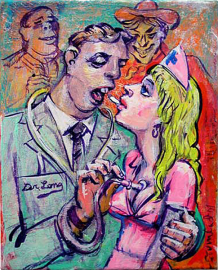




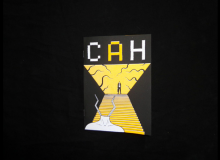
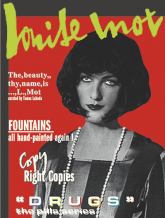
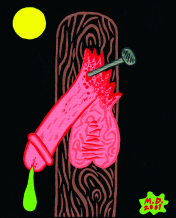
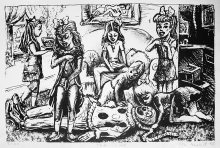


 New book by I.M.Jirous in English at our online bookshop.
New book by I.M.Jirous in English at our online bookshop.
Комментарии
Статья не была прокомментированаДобавить новый комментарий